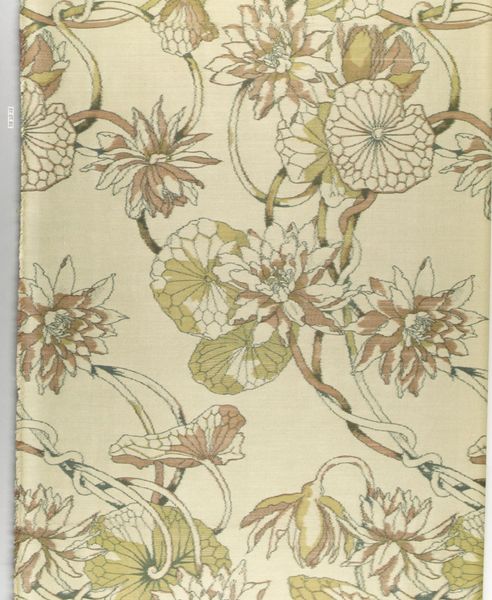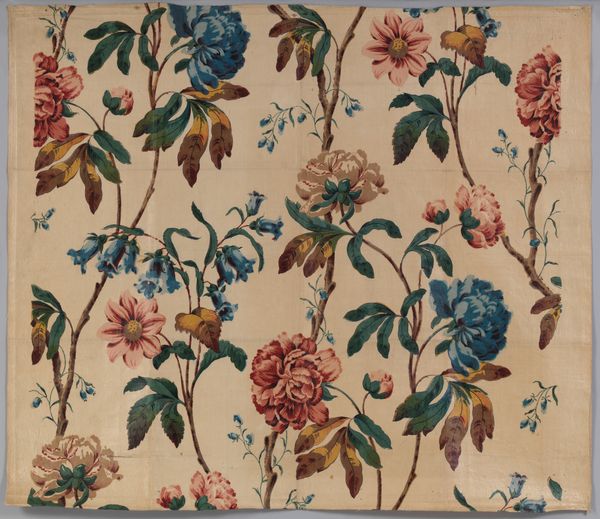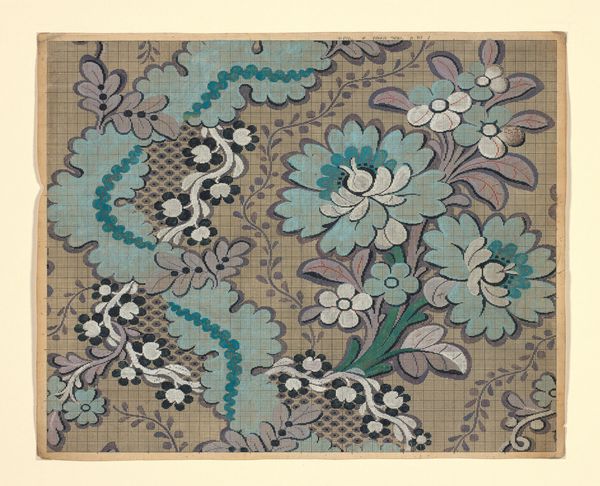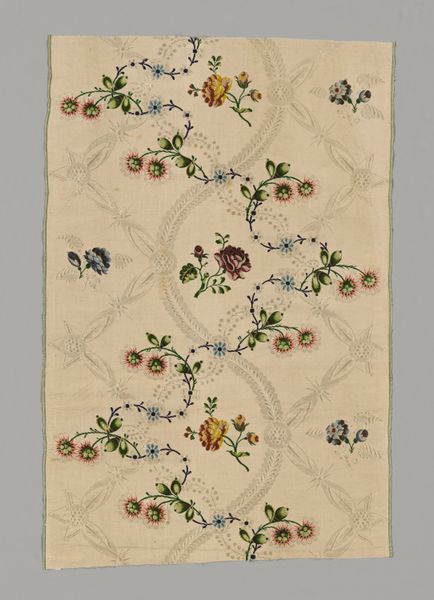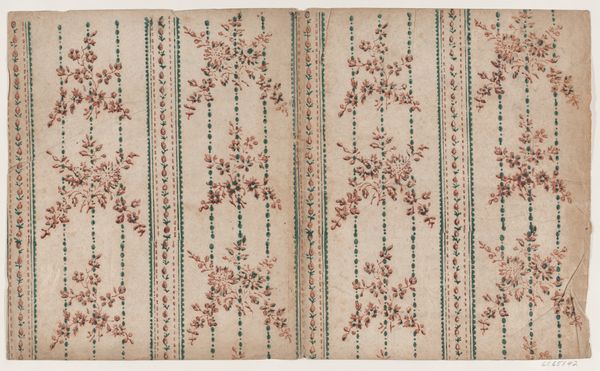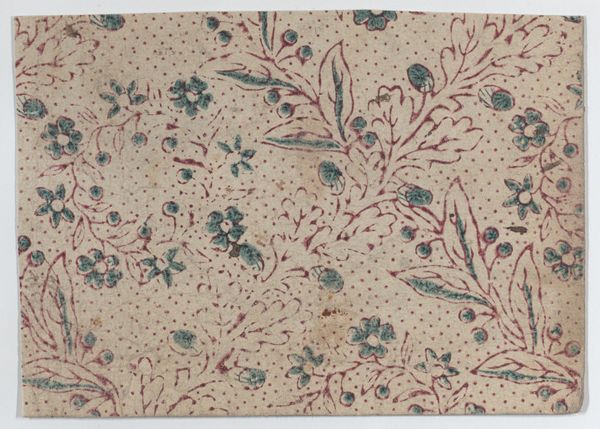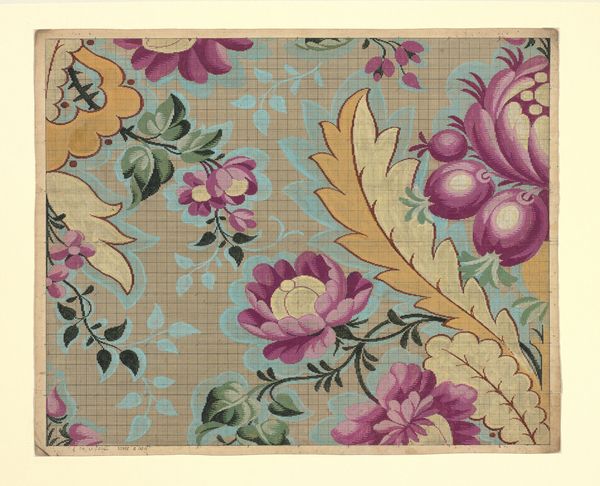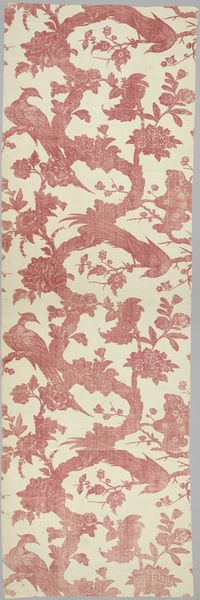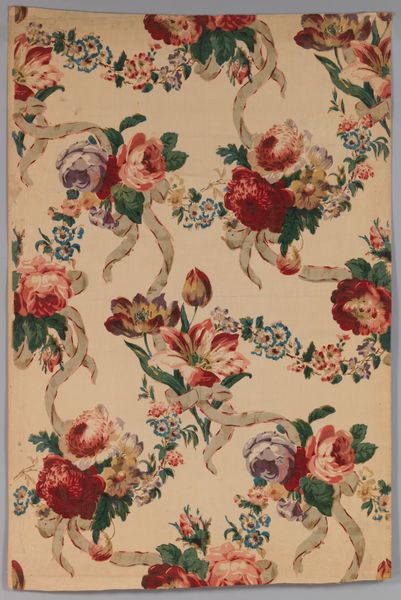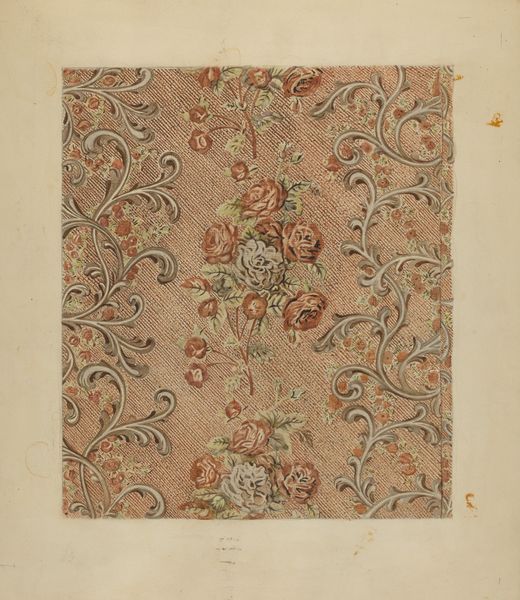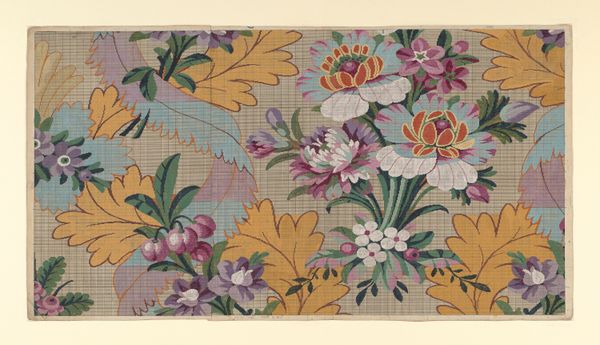
tempera, print, textile
#
natural stone pattern
#
naturalistic pattern
#
organic
#
tempera
# print
#
arts-&-crafts-movement
#
pattern
#
landscape
#
textile
#
flower
#
geometric pattern
#
pattern background
#
abstract pattern
#
ethnic pattern
#
organic pattern
#
plant
#
flower pattern
#
pattern repetition
#
botany
#
decorative-art
#
layered pattern
Copyright: Public domain
Curator: The work before us, "Wallpaper - Blackberry, pattern #388," by William Morris, produced around 1917, employs tempera as its primary medium, resulting in a stunning textile print. Editor: There's something inherently comforting in this piece, despite the thorned branches. It feels both orderly and wild, that cool green ground gives it such serenity. Curator: Morris, as a leading figure in the Arts and Crafts movement, held a deep commitment to elevating the status of craftsmanship, believing in art's potential to inspire social change. This pattern isn't merely decorative; it reflects a wider ideology about labor and accessible beauty. Editor: Precisely. The materiality speaks volumes. Tempera, demanding skill and patience, aligns with the movement's ethos. Considering the time period, mass production was rapidly changing textile manufacturing. I see Morris pushing back. Each leaf, each flower rendered with such care. Curator: And that carefulness isn’t apolitical. In Victorian England, labor was so clearly stratified. What does it mean to lovingly craft something that others can own? It democratizes access to fine artistry. The blackberries themselves, considered common and accessible fruits, become dignified through his rendering. Editor: A critical detail, especially regarding consumption. It brings awareness to the user – from whom, from what lands did the materials derive? Labor conditions and environmental impact become silent partners in this pattern. Curator: I also consider the social impact, how gendered notions played out then and now. Women's work, women artists, women as consumers of textile crafts; we all carry the burden of respectability through our belongings. How do you think this work disrupts this hierarchy of taste? Editor: It forces the viewer to reconsider the value system. It demands we challenge classist ideals and remember the artist behind the output, connecting craft and industry by making those production relationships and conditions transparent, revealing human connections in the manufactured environment. Curator: Thinking about this art piece now I can reflect how we still need a revolution where accessibility to fine artistry is not considered a privilege, as William Morris longed for at the time. Editor: I find I'm drawn to its almost meditative quality, and reflect on the current revivals of lost traditional skills, and reconsidering a slow living revolution.
Comments
No comments
Be the first to comment and join the conversation on the ultimate creative platform.
